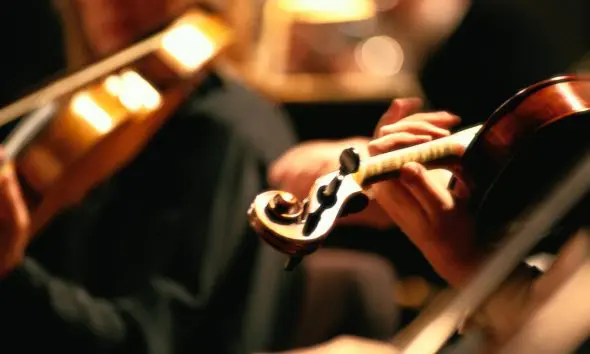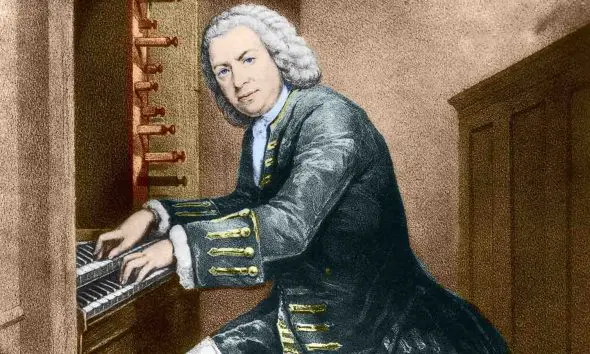Best Ballet Music: Top 10 Greatest Scores
Discover our selection of the greatest ballet music including Tchaikovsky’s ‘Swan Lake’, ‘The Sleeping Beauty’ and ‘The Nutcracker’.

If your knowledge of classical dance stretches no further than Rudolf Nureyev wrestling with a giant pig in Swine Lake, then it’s time to widen your port de bras. So why not join me by titivating your tutu, pulling on your pointe-shoes, and dipping an elegantly extended toe into the magical world of the best ballet music. Discover our selection of ten classic scores which were either composed specifically for the dance, or have become famous because choreographers have employed them for ballets.
Listen to Tchaikovsky: Ballet Suites, featuring Swan Lake, The Sleeping Beauty and The Nutcracker performed by the Berlin Philharmonic conducted by Mstislav Rostropovich, on Apple Music and Spotify and scroll down to discover our selection of the greatest ballet music.
Best Ballet Music: Top 10 Greatest Scores
10: The Nutcracker
Tchaikovsky is truly the alpha and omega of ballet music. The Nutcracker is centered around a young girl’s Christmas Eve celebration and her romantic awakening. She creeps downstairs to play with her favourite present, a nutcracker, that comes to life as a handsome prince who whisks her off to the Land of Sweets. What has always struck people about Tchaikovsky’s Nutcracker, one of the greatest ballet music scores, is the astonishing sounds the composer gets from the orchestra – he brings the toys and sweets to life in music that somehow sounds like glittering cut-glass, crystallised ginger and spun sugar. His score for The Nutcracker is a perennial Christmas favourite, and contains hundreds of musical sugar-plums. It contains a real sugar-plum too, in the form of a dance for – who else? – the Sugar Plum Fairy.
9: The Red Shoes
After the resounding success with his innovative Swan Lake, Matthew Bourne has produced several full-length ballets, some more successful than others. His brilliant hit The Red Shoes, premiered 2016, is based on the celebrated film of the same name by Powell and Pressburger. The story concerns a 1940s ballet dancer whose struggle to choose between her ambition and her heart leads to tragedy, and it contains a clever ballet-within-a-ballet about a bewitching but deadly pair of magical shoes which make the heroine dance to her own destruction. Bourne chose a marvellous selection of pieces by Hollywood film composer Bernard Herrmann for the score, and they work tremendously well in conjuring a febrile 1940s atmosphere. Here’s ‘Andante Cantabile’ from the film The Ghost and Mrs Muir. In the ballet, it is used for a sequence depicting the tortured soul of tyrannical ballet impresario Boris Lermontov.
8: ‘The Dying Swan’
Saint-Säens composed his delightful Carnival Of The Animals in 1886, but forbade performances of it until after his death (in 1921). Fortunately for the Russian dancer Anna Pavlova, the composer did allow one number from the work, a cello solo called ‘The Swan’, to be published before that. When choreographer Mikhail Fokine heard it in 1905, he slaughtered the poor bird – artistically speaking – and created a dance for Pavlova which caused a sensation. She performed more than 4000 times, and it has become a favourite of ballerinas everywhere.
7: Ballet music from Gounod’s Faust
Unfortunately Wagner’s ploy to please the fickle Parisians failed miserably. They expected the ballet to be in Act 2, but the composer placed it near the beginning of Act 1. This meant that a notable clique of louche, self-entitled, male members of the audience called ‘The Jockey Club’ – who never appeared until a performance was well underway – missed seeing their favourite dancers in their skimpies, and they weren’t happy about it. Wagner could have learned a thing or two from Gounod, who placed his wonderful ballet music for the opera Faust (1859) in just the right place, and scored a huge Parisian hit. Listen to ‘Danse de Phryné’, the ‘train track’ music, which was used later as an accompaniment for scores of silent films.
6: The Venusberg music from Tannhäuser
Ballet played a significant role in the development of so-called ‘grand opera’ in Paris in the nineteenth century, when dancing increasingly became to be considered a necessary and lavish part of the spectacle. When Wagner revived his opera Tannhäuser for Parisian audiences in 1861 therefore, he found himself expected to add a ballet and – unusually for Wagner, who was not the most compliant of chaps – he agreed. He wrote a splendid bacchanal to suggest all the orgiastic delights of Venus’s realm. Here it is in all its frenzied excess.
5: The Sleeping Beauty
Back to Tchaikovsky again – and why not? After all, his scores still form the cornerstone of every ballet company’s repertoire. After Swan Lake, he turned his attention to a much cheerier story, and although the plot of The Sleeping Beauty, one of the best ballet music scores, does not have the ambiguity or complexity of its predecessor, it has a parade of delightful hit tunes. One of the most popular is the celebrated ‘Rose Adagio’, written for the moment in the story when sixteen year-old Princess Aurora dances with four of her suitors at a palace ball.
4: Spartacus
After the fall of Tsarist Russia, the Soviet Union – somewhat surprisingly, considering its brutal proletarianism – continued to prize ballet as a worthy art form. One of the most popular ballets of the Soviet era was by the Armenian composer Aram Khachaturian and told the story of the imprisoned Thracian king Spartacus. The ‘Adagio’ for Spartacus and his wife Phrygia, who have both escaped their captivity, is one of the score’s unforgettable highlights. (And, sorry, but can’t resist mentioning it: it was also used for the popular TV series The Onedin Line).
3: The Rite Of Spring
With Tchaikovsky’s success, Russia began to vie with France as the spiritual home of ballet. Bringing the two strands together, Stravinsky composed The Rite Of Spring (1913), one of the greatest ballet music scores, for a Parisian season of Diaghilev’s Russian Ballet Company. The world premiere caused a riot, as much for the sophisticated barbarism of the music as for Nijinsky’s deliberately angular choreography.
2: Romeo And Juliet
Tchaikovsky paved the way for other great composers to consider ballet as a worthy outlet for their talents. One of the most successful was Sergei Prokofiev, who went on to provide the genre with some of its most memorable twentieth-century works. In Romeo And Juliet (1940), one of the best ballet music scores, he created a dance for the Montagues and Capulets which has launched a thousand adverts and TV programmes.
1: Swan Lake
During the first part of the nineteenth century, when the now-familiar features of classical ballet were developed and established, the music for new works didn’t reach a very high standard. Very few people, even now, listen to the rather rum-ti-tum works of Adolphe Adam (who wrote Giselle) or Ludwig Minkus (La Bayadère and Don Quixote) outside the ballet-theatre. But that all changed with the advent of Tchaikovsky into the field. His emotionally charged music for Swan Lake (1877) raised the level of ballet music to a new high, and is one of the earliest scores which can stand on its own two feet (pun intended) in a concert hall. Here’s the shattering climax, in which the hero and heroine sacrifice themselves to be together forever in death.
Incredible though it may now seem, the ballet itself was a bit of a flop in 1877, and only became a mega-hit when revived in 1895 after Tchaikovsky’s death. Since then it’s had hundreds of new stagings, some with happy endings and some with tragic. One of the most innovative productions is Matthew Bourne’s fantastically punchy version, which replaces the corps of female swans with an all-male troupe of dancers.
And how could one fail to include the best version of all, already mentioned above – Nureyev’s immortal Swine Lake?
Recommended Recording
Tchaikovsky: Ballet Suites, our recommended recording featuring Swan Lake, The Sleeping Beauty and The Nutcracker performed by the Berlin Philharmonic conducted by Mstislav Rostropovich, can be bought here.




